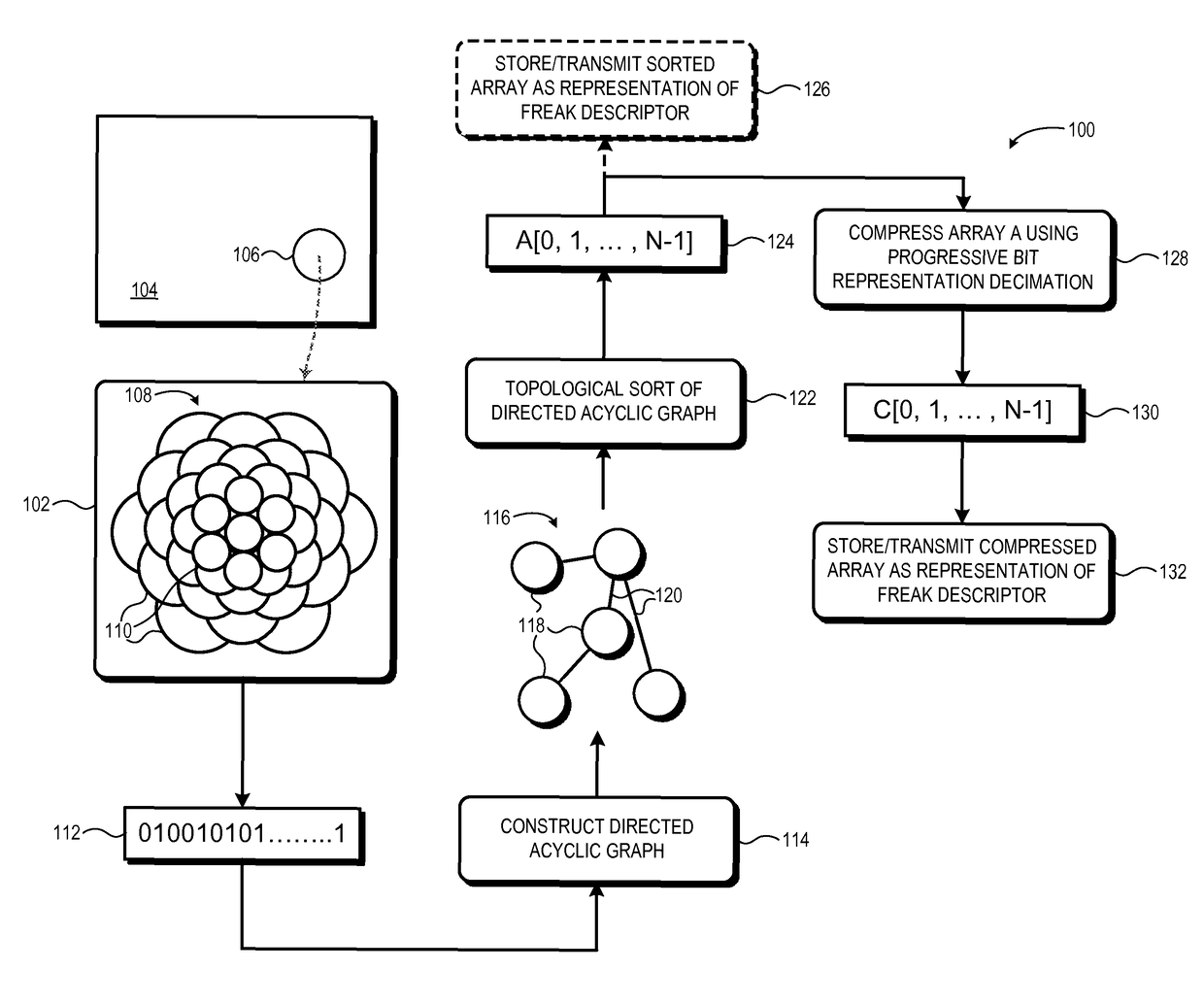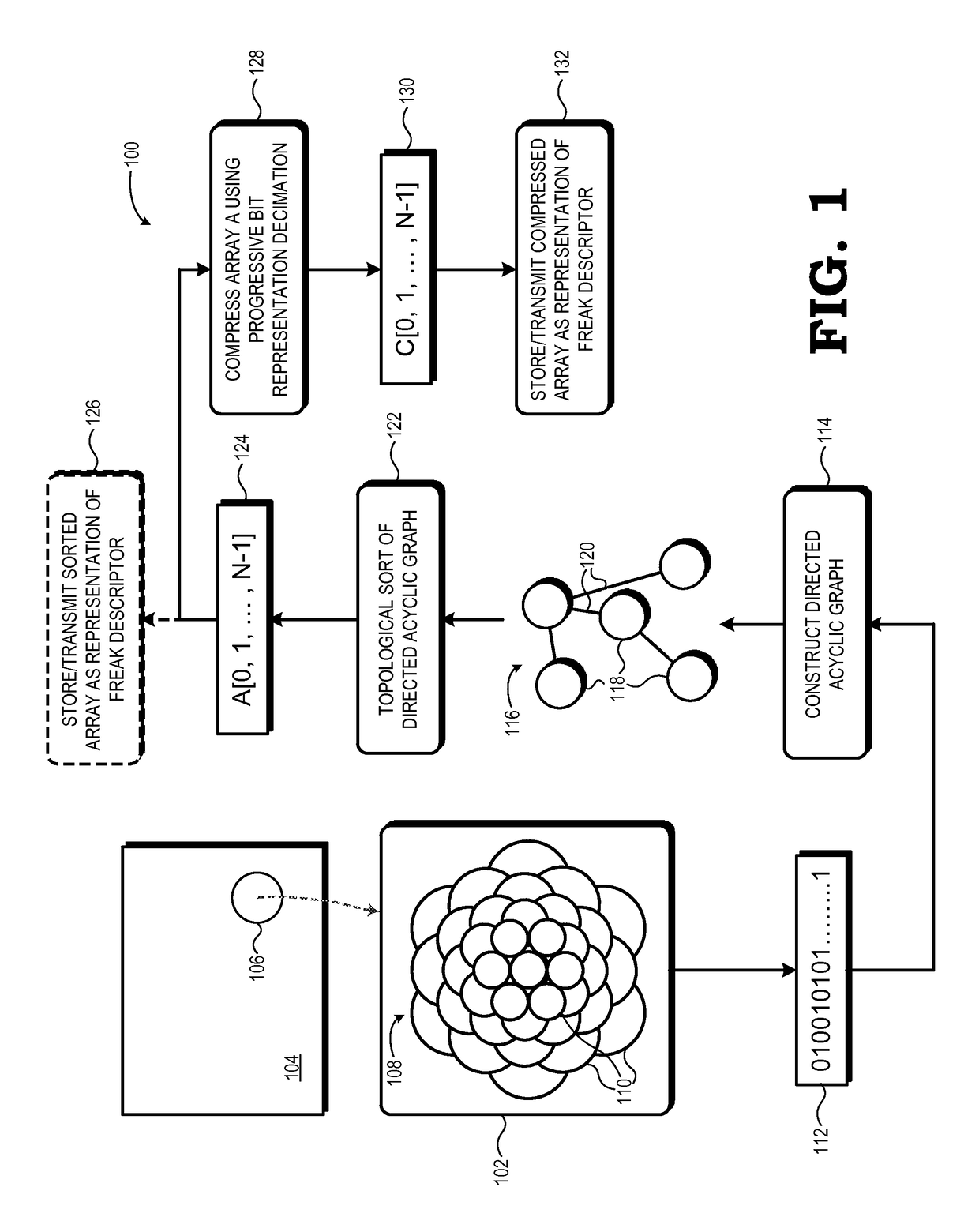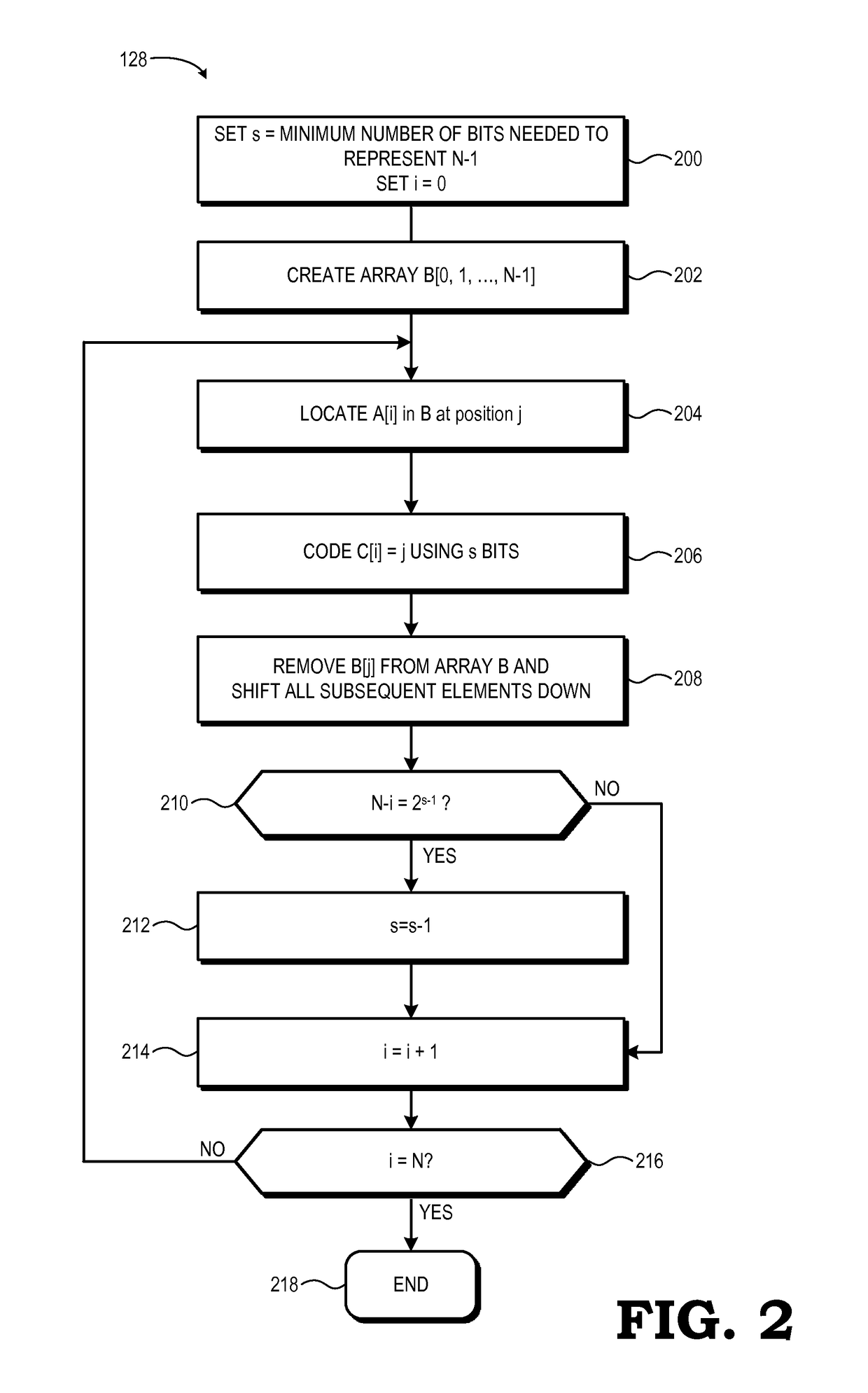Lossless spatial feature descriptor compression
a spatial feature and descriptor technology, applied in the field of spatial feature analysis for imaging, can solve the problems of even more severe difficulties in transmitting and storing spatial feature descriptors
- Summary
- Abstract
- Description
- Claims
- Application Information
AI Technical Summary
Benefits of technology
Problems solved by technology
Method used
Image
Examples
Embodiment Construction
[0013]FIGS. 1-7 illustrate example systems and techniques for lossless compression and decompression of patch-comparison-based spatial feature descriptors. For ease of illustration, the techniques of the present disclosure for compressing and decompressing a spatial feature descriptor are illustrated in the example context of a Fast Retinal Keypoint (FREAK) spatial feature descriptor. However, these techniques are not limited to this particular implementation, but instead may be applied, using the guidelines provided herein, to the compression and decompression of similarly-structured spatial feature descriptors that rely on binary comparisons between various patches, or regions, of an image. Accordingly, reference herein to a FREAK spatial feature descriptor also may apply to other such spatial feature descriptors unless otherwise noted.
[0014]FIG. 1 illustrates an example lossless FREAK spatial feature descriptor compression process 100 in accordance with at least one embodiment of...
PUM
 Login to View More
Login to View More Abstract
Description
Claims
Application Information
 Login to View More
Login to View More - R&D
- Intellectual Property
- Life Sciences
- Materials
- Tech Scout
- Unparalleled Data Quality
- Higher Quality Content
- 60% Fewer Hallucinations
Browse by: Latest US Patents, China's latest patents, Technical Efficacy Thesaurus, Application Domain, Technology Topic, Popular Technical Reports.
© 2025 PatSnap. All rights reserved.Legal|Privacy policy|Modern Slavery Act Transparency Statement|Sitemap|About US| Contact US: help@patsnap.com



